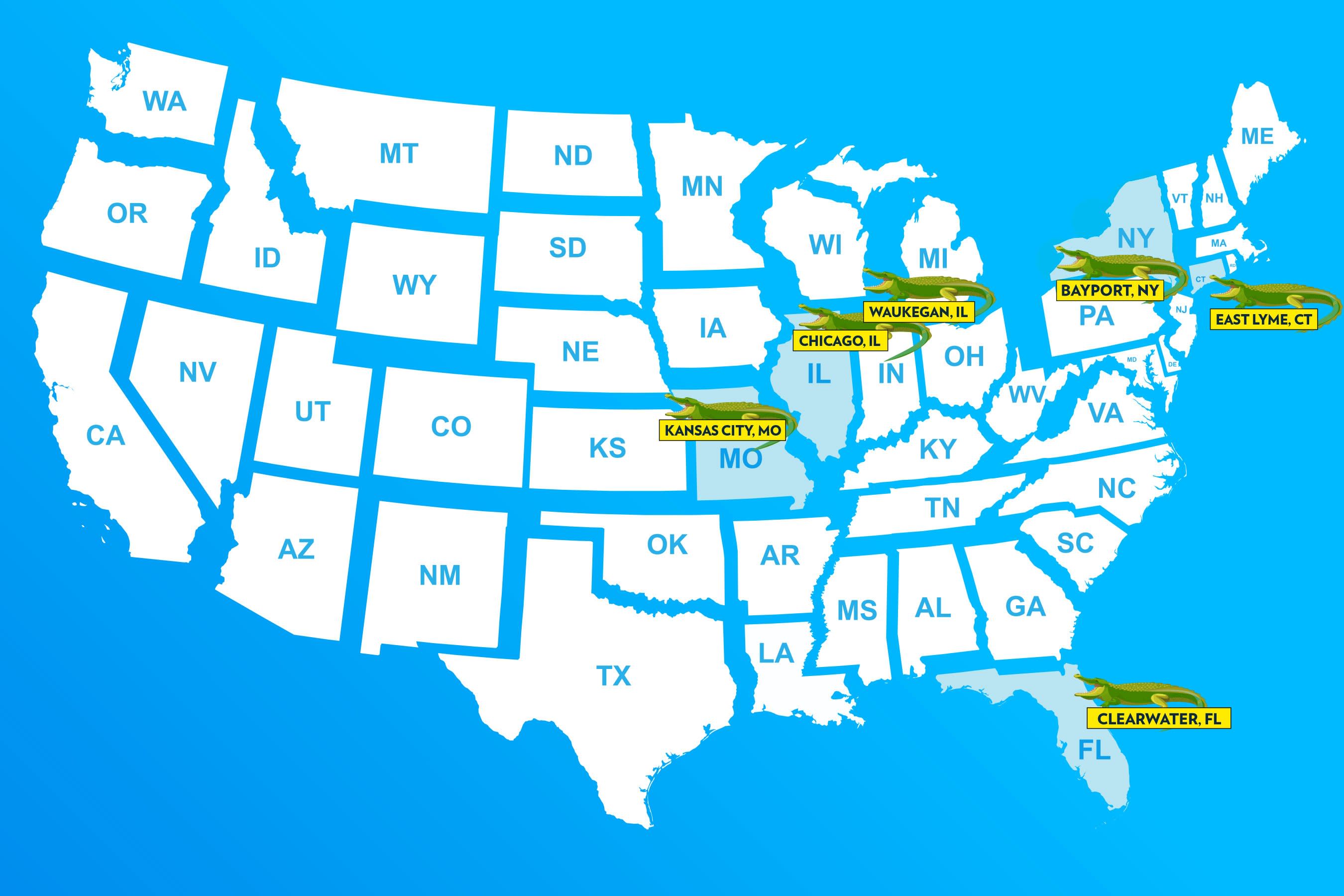Map Of Alligator Pond
There's no denying it: alligators are fascinating creatures. These reptiles have been around for over 37 million years, and they can be found in surprising locations all across the United States. If you're curious about where you might be able to spot one of these incredible animals, look no further than this map.

As you can see, alligators can be found in a variety of different habitats, from the swamps of Florida to the urban canals of New York City. But why are these animals appearing in such unlikely places? There are a few different theories.
One major factor is the loss of their natural habitats due to urbanization. As cities and towns expand, alligator habitats are shrinking and being pushed farther away from their traditional territories. This can force them to seek out new locations to call home – even if those locations are more populated than they would normally prefer.
Another possibility is that alligators are simply becoming more adaptable. These animals are incredibly resilient, and they have been able to survive and thrive in a wide range of different environments over the course of their long history.
Of course, it's important to remember that alligators are still wild animals. If you do happen to spot one in the wild, it's best to keep a safe distance and avoid disturbing them. Alligator attacks are rare, but they can be dangerous if provoked.
So what can we do to protect these amazing creatures? One key step is to preserve their natural habitats to the best of our ability. This means protecting wetlands and other areas where alligators live, and avoiding building in these areas whenever possible.
But it's also important to remember that alligators are a vital part of many different ecosystems, and they play a key role in helping to maintain the balance of these ecosystems. By learning more about these incredible animals and respecting their habitats, we can help to ensure that they continue to thrive for generations to come.
Demographics and Culture:
Alligators have long been an important symbol in the culture of the southern United States. They are often associated with the state of Florida, where the species is particularly abundant. Alligators are sometimes used as mascots for sports teams and other organizations, and they have appeared in a wide range of movies, TV shows, and other forms of popular media.
Tourist Destinations:
For many tourists, spotting an alligator in the wild is a highlight of any trip to Florida or other southern states. There are also many zoos and wildlife parks that feature alligators, and these attractions can provide visitors with a chance to learn more about these fascinating creatures.
Shopping and Culinary:
Alligator meat is a delicacy in many parts of the world, and it can be found on the menu at many high-end restaurants. However, it's important to remember that alligator hunting is heavily regulated, and it is illegal to hunt the animals without a permit.
Tips:
If you're planning to visit an area where alligators are known to live, it's important to take some basic precautions to ensure your safety. These may include staying in designated areas, staying out of the water unless you are swimming in a designated swimming area, and avoiding feeding or approaching the animals.
FAQ:
Q: How fast can an alligator run?
A: Alligators can run at speeds of up to 20 miles per hour on land, but they generally prefer to move more slowly and cautiously.
Q: Do alligators really live in New York City?
A: Yes! Alligators have been spotted in the canals of New York City, most likely as a result of people releasing pet alligators into the wild.
Q: Are alligators dangerous to humans?
A: Alligator attacks are rare, but they can be dangerous if provoked. It's important to always maintain a safe distance from wild alligators and avoid disturbing them in their natural habitats.



/Battle_of_Talas-38df334b1fc146cc8c72999c89bcf9f0.png)